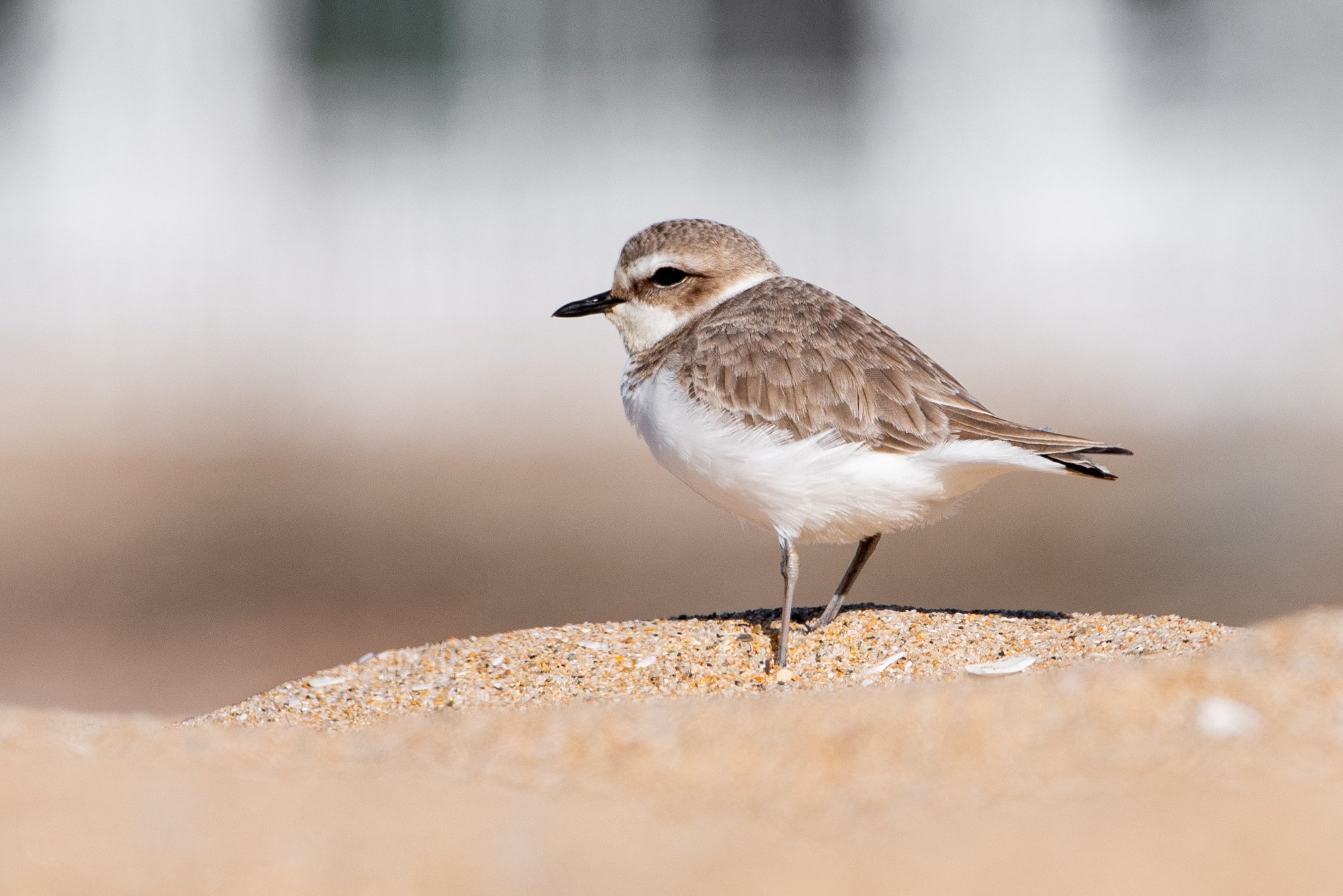Western Snowy Plovers: The Most Tiny Birds on our Beaches
The Western Snowy Plover is a small (tiny) shorebird that is native to the coastal areas of the western United States. These birds can be found in sandy habitats such as beaches, sand dunes, and estuary mud flats. They are listed as threatened under the Endangered Species Act due to habitat loss and predation.
The Western Snowy Plover has an adorable appearance with pale brown feathering, a white belly, and black patches on either side of its neck. The male gets a slightly darker “cap” in the breeding season, while a female retains a lighter, brownish cap. Have you seen a bird that is cuter than this?
The adults hang out on our local beaches over the winter, often in small groups. They tuck into human footprints and tire tracks, and sometimes, all that shows is a little head poking out of the sand! They disperse into pairs as breeding season ramps up and can become quite territorial. They run around in quick bursts, with pauses in between, while looking for food. They eat small invertebrates, mostly insects and small crustaceans on the sand. The plovers use their beaks to probe the sand and pick out their meals.
The chicks are entirely too cute to handle at times. They slightly resemble a cotton ball running around on toothpicks, and it’s just too much. Mama Plover takes care of the nest until the chicks are hatched, then Papa Plover takes over care of the chicks. He will often settle down on the beach with his chicks tucked underneath, and that is honestly the cutest thing you’ll ever see on the beach.
Despite their tiny size, these birds are tough and have adapted (to some extent) to living in unfavorable and crowded coastal environments. Conservation efforts like habitat protection and predator control have helped to increase their population, providing hope for this remarkable species. But they are still a tiny species in trouble and need our help!
They are designated as threatened species in California due to habitat loss, human disturbance, and predation. These reasons could be improved by us - protect their habitat, don’t crowd them on the beach, leave your dog at home, don’t fly drones at the beaches, and pick up as much trash as you can on the beaches. Trash attracts predators that are bad news for these small birds, especially their tiny chicks!
I volunteer with California State Parks to help protect these little birds. Some of the efforts to protect these birds include monitoring winter populations, surveying the summer beach for adults with nests, eggs, and chicks, fencing or roping off active nesting areas, and educating people at the beach about the birds.
Plovers make shallow scrapes for a nest, decorate it with little shells, and then lay their eggs in it. The eggs are spotty and patterned, quite pretty, and super camouflaged on the beach! Permitted biologists often install a “cage” called an ME (mini-exclosure) around the nest. This keeps some predators away from the eggs, like gulls and crows. The holes are big enough for the adults to go in and out, and for the chicks to get out as soon as they hatch.
If you ever happen to come across little sandy-colored eggs on a beach, you’ll probably see an adult nearby making a bit of a scene. They perform a “broken wing display” to lure away a predator - “come get me, I’m hurt, I’ll be easy to catch”! These birds are mighty for their small size, and when they get a nest or chicks… they are fierce protectors!
Volunteering for these birds, and their neighbors, the California Least Terns, is truly my favorite thing to do. I look forward to my volunteer shifts every year while I’m waiting for the season to start. They nest and raise their chicks on very busy beaches, during the very busy summer season, so they need all of the help they can get. I’m always so happy to be able to spend time out there with them, and to take photos of their adorable behaviors!
Taking photos of these birds is a privilege and a joy. It is essential to maintain an appropriate distance. I take photos with a long zoom lens and crop them beyond that. It’s extremely important to give these birds a lot of space! #ShareTheShore








































































